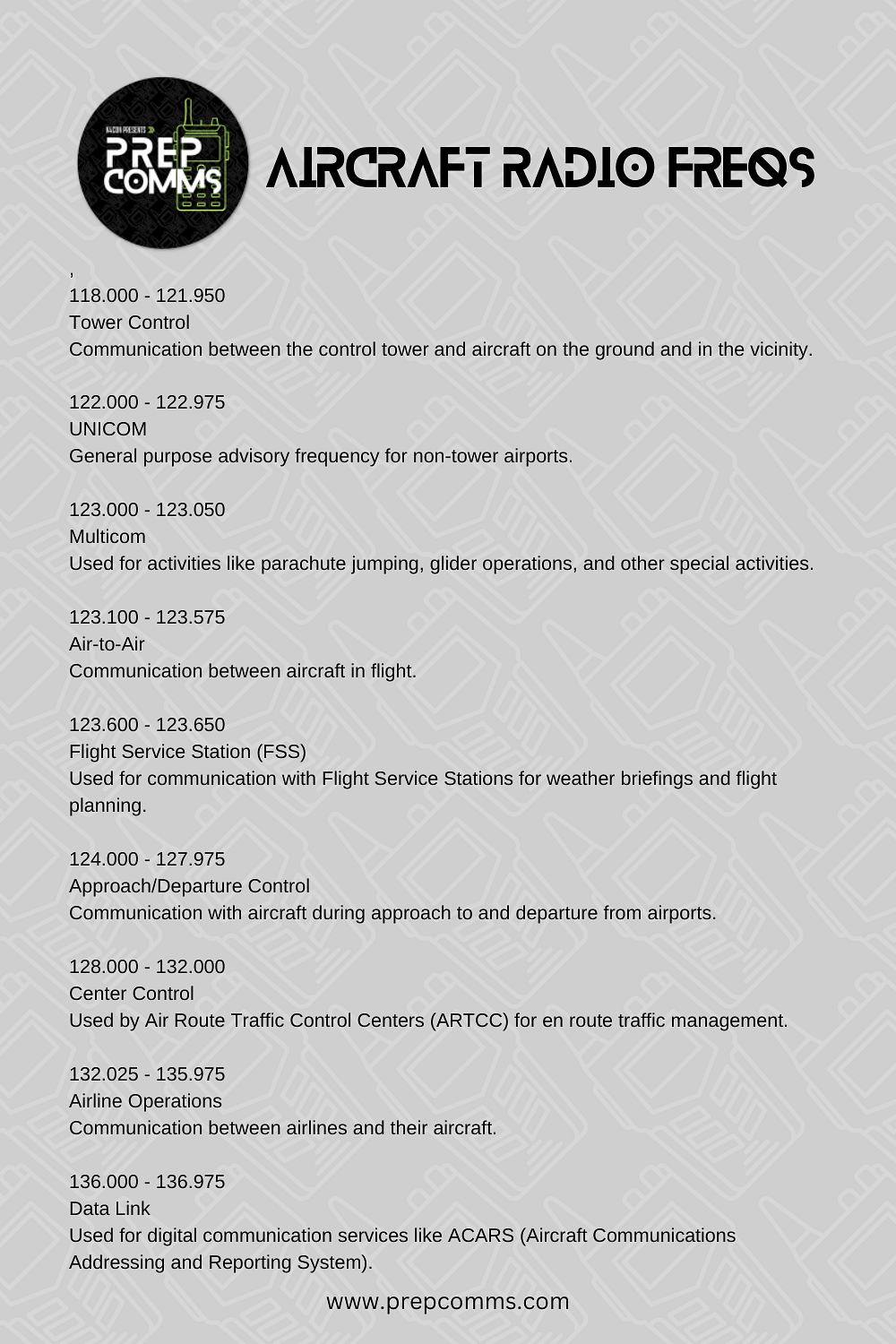
Why Listen to Aircraft on Scanners?Scanner listening opens a window into the aviation world. You can hear real-time communications between pilots and air traffic controllers, weather updates, emergency broadcasts, and even military operations. It's a unique way to experience the dynamic nature of air travel and gain insights into how aviation operates. Understanding Airband FrequenciesAircraft communication primarily occurs in the VHF (Very High Frequency) band. Here's a breakdown of some key frequencies: VHF Guard (121.500 MHz): Emergency Locator Transmitter (ELT) (121.775 MHz): Frequencies for Different Aircraft TypesCommercial Aircraft:
Military Aircraft:
Private Aircraft:
Essential Equipment for Scanner ListeningTo start listening to aircraft communications, you'll need a scanner capable of receiving the airband frequencies (108-137 MHz). Some popular models include the Uniden Bearcat and Whistler scanners. Ensure your scanner has the following features:
Tips for New Scanner EnthusiastsStarting out as a scanner enthusiast can be daunting, but these tips will help you get the most out of your new hobby:
Legal ConsiderationsWhile listening to aircraft communications is generally legal, there are some important rules to follow:
By understanding the different aspects of aircraft scanner listening, you can fully enjoy this fascinating hobby. From hearing the busy chatter of commercial airliners to catching the occasional military transmission, there's always something new and exciting in the friendly skies. ScannerMaster is the Online source for ALL things Scanners, If you're interested in buying a scanner, you can't find a better place to shop! Here is a link to my Amazon Store: Scanner Suggestions PDF links to download lists below!  |

Print and Compile with your other show notes these Free PDF's of the above lists: |
Cale(b) is an author, speaker, longtime stay at home dad and small business owner. He and his wife of over 25 years, Carla, have 5 beautiful children and 2 Goldendoodles. Caleb is a FM Radio veteran and licensed Amateur Radio Operator (K4CDN). In the days before kids and radio, he spent nearly a decade in the Professional Fire Service as an Engineer and EMT. Caleb’s heart to serve and to teach shines in his work, whether on the page or over the air.



